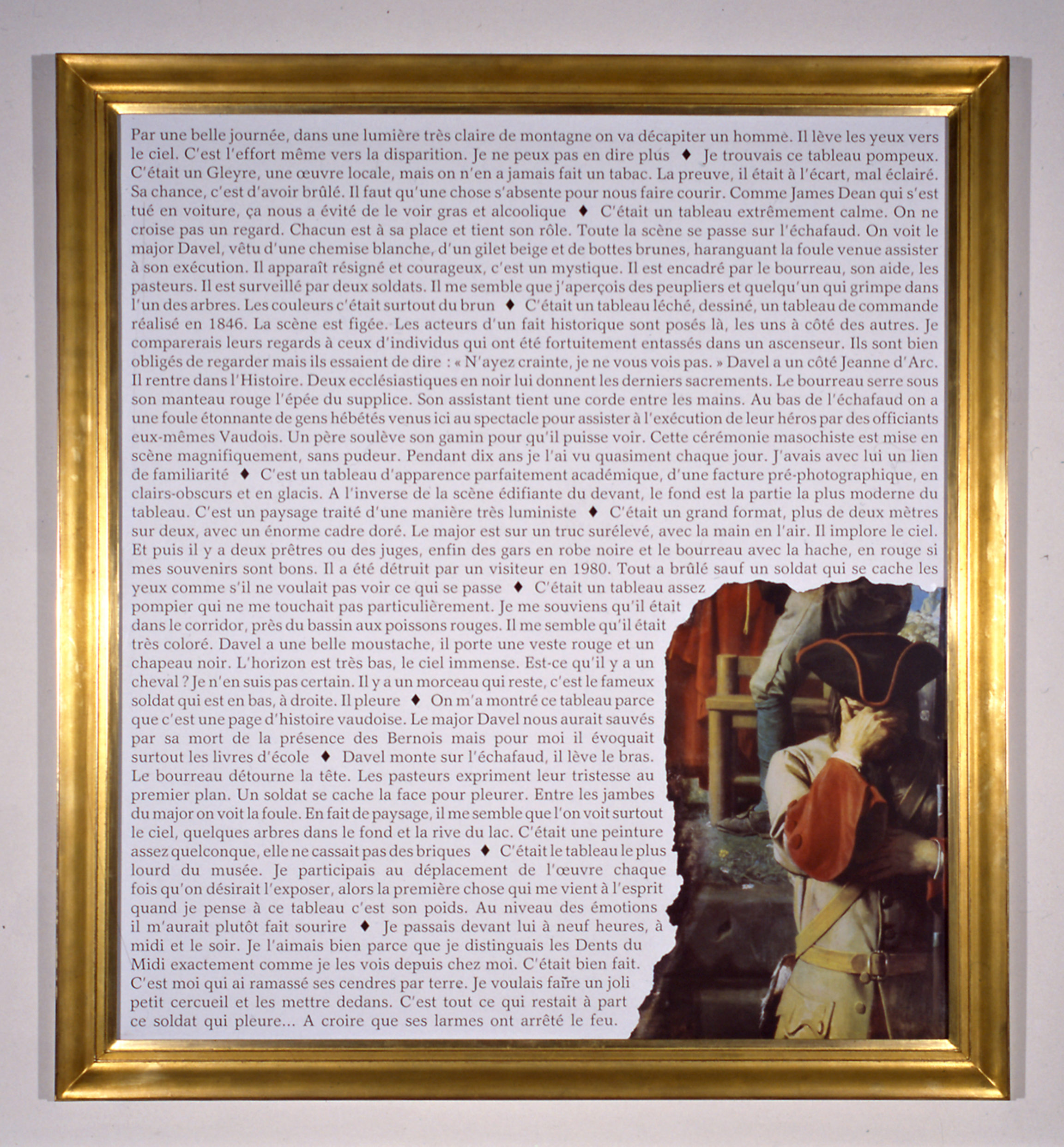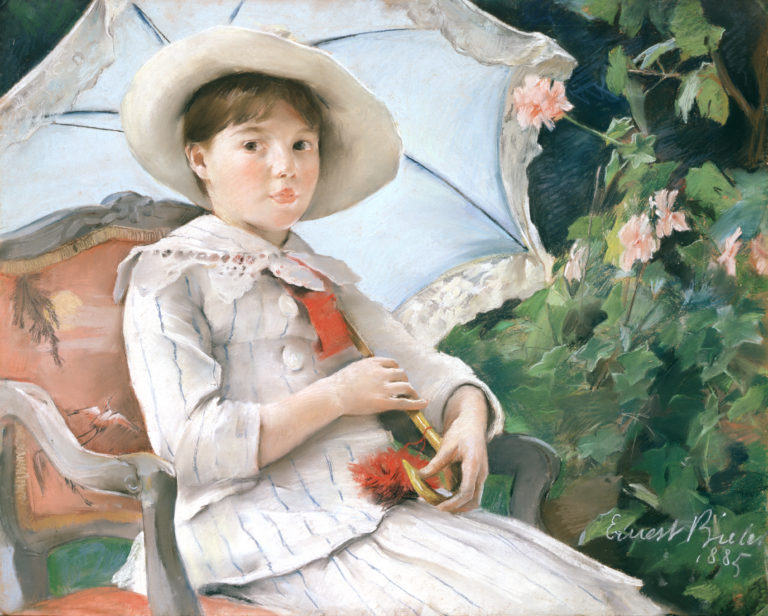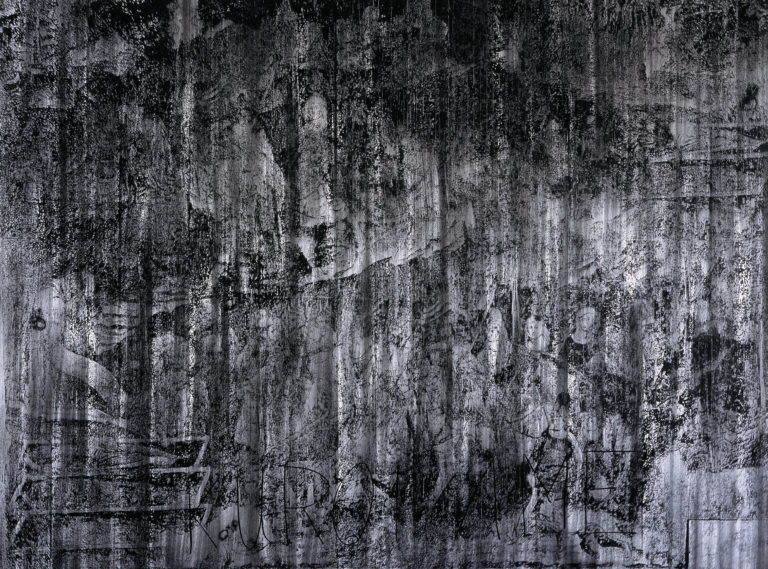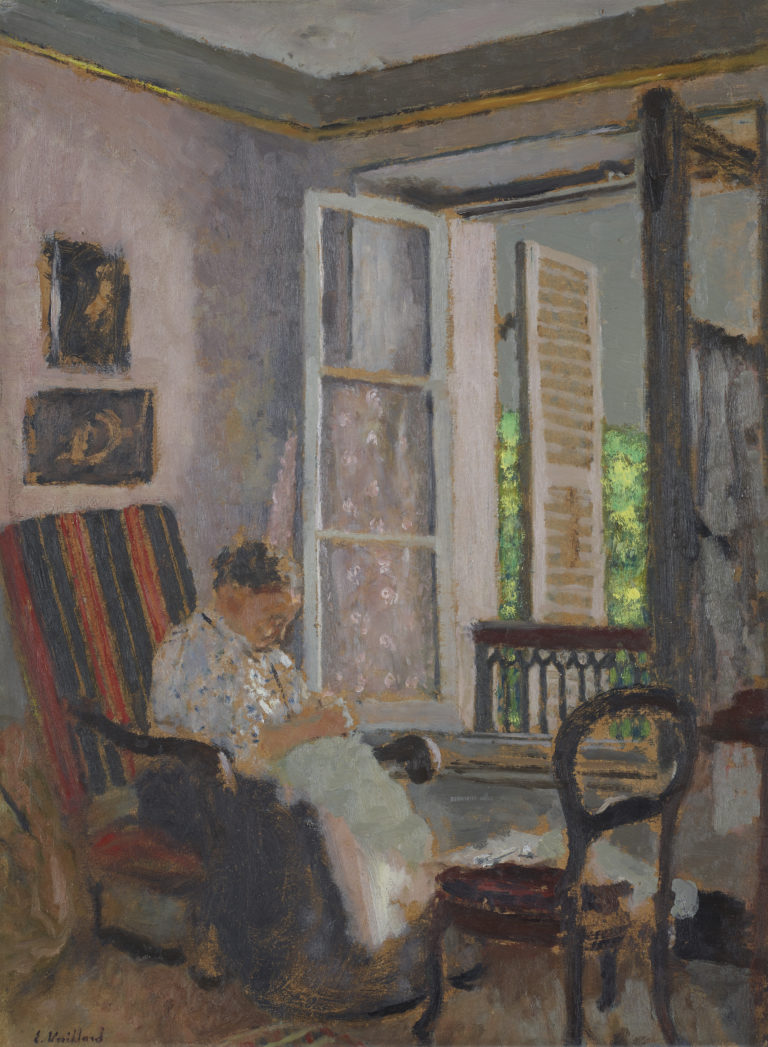Bibliography
Catherine Lepdor, Patrick Schaefer and Jörg Zutter, Musée cantonal des Beaux-Arts de Lausanne, Zurich, Institut suisse pour l’étude de l’art/Genève, Banque Parisbas (Suisse) S.A., 1998: 123.
Johan Ter Molen and Jörg Zutter (eds.), Sophie Calle. Absence, exh. cat. Rotterdam, Museum Boymans-van Beuningen, Lausanne, Musée cantonal des Beaux-Arts, 1994: 68-69.




Sophie Calle’s work from the 1990s often stages works of art missing from museums for various reasons. Her 1991 Last Seen… series, for instance, referenced the theft of works from the Isabella Stewart Gardner Museum in Boston. She asked the curators and guards to describe the missing works, then displayed their accounts alongside photographs of the empty spots where they once hung. The series foregrounded the selective nature of memory and the constant fictionalisation of reality.
At her 1994 exhibition at the Museum, Calle learned that one of the paintings in its collection, Charles Gleyre’s 1850 masterpiece L’Exécution du Major Davel (The Execution of Major Davel) was targeted by an arsonist in the night of August 24-25, 1980. All that survived of the work was the bottom right-hand corner, showing a weeping soldier with his right hand over his eyes. Calle made up for the loss, both literally and figuratively, by asking museum staff to describe the lost scene of Major Davel’s beheading. Extracts from their descriptions fill in for the missing canvas. The memories corroborate, complete, and even sometimes contradict each other, and the accumulated effect generate a partial image of Gleyre’s painting. The ‘weeping soldier’, the only surviving fragment, is mentioned several times. The character, whose tears some like to think put out the flames, seems to be reacting not to the major’s death sentence, but to the destruction of the painting itself. The soldier’s unseeing eyes cleverly mirror the viewer, who can likewise no longer see the painting.